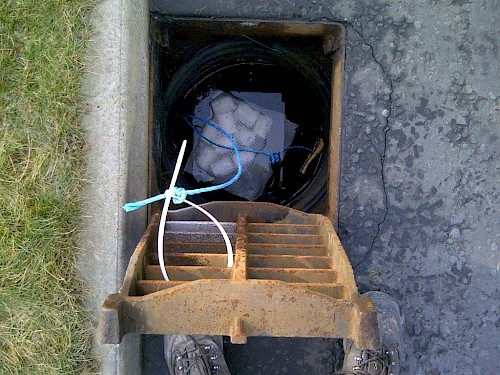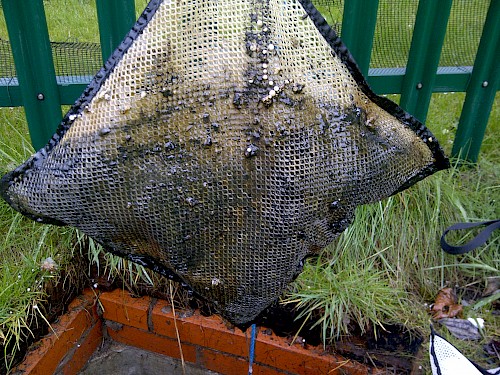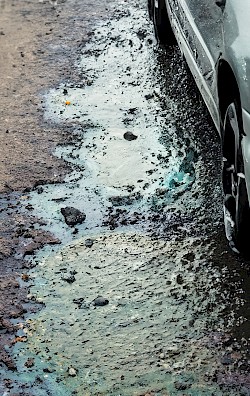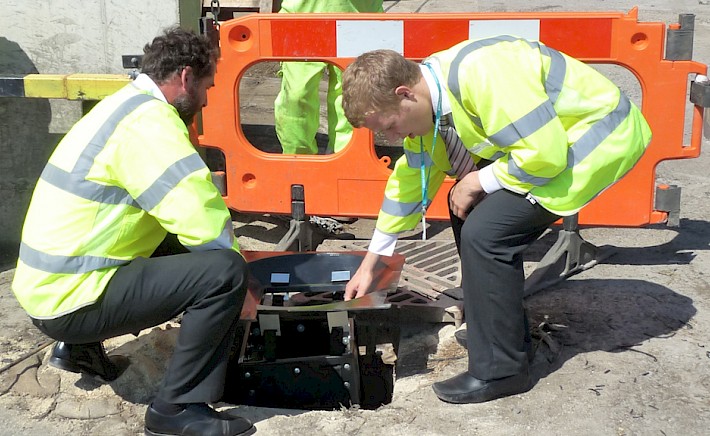Pollution caused by surface water run-off from the UK’s road network, car parks and other surfaced areas is undoubtedly a major concern. The Environment Agency advises that “highways drainage and urban diffuse pollution is a serious issue causing 18 percent of failures for water bodies in England under the Water Framework Directive”i. So it is important we recognise the damage that road pollution, often carrying metals and hydrocarbons as well as particles from tyres off the road, effects the surrounding natural environment.
Currently, road drainage water is either channelled into the sewage system or left to soak into the ground. Inevitably, the latter risks polluting aquifers – layers of rock that can hold and release water – which are vital to supplying water to many urban areas.
In a move reflecting its concern about the issue, UNESCO is backing a University of Brighton research project designed to understand and reduce groundwater pollution ii with Professor Martin Smith, Associate Dean for Research and Knowledge Exchange at the University stating "Road drainage is the third highest cause of water pollution in the UK.”
Both National Highways and local authorities are responsible for regulating and minimising this type of pollution, a task that cannot be underestimated. In October last year, The Guardian newspaper reported that more than 18,000 outfalls and more than 7,000 soakaways discharge rainwater which potentially contains heavy metals, hydrocarbons, microplastics and other chemicals into rivers and surrounding land iii. The Highways Agency itself reported that more than 1200 of these outlets and soakaways “had a potential high risk for pollution” and it’s worth noting that National Highways only operates 3% of the road network.iv
It's clearly not practical to retrofit every drainage outlet with some form of pollution control and regulators argue that it’s impractical to monitor every single outlet so mitigation of the potential pollution risk is critically important. The specification of drainage solutions that prevent hydrocarbons and other harmful pollutants contaminating our water supply and land is however already achievable without adding significant construction costs.
A good understanding of specification requirements is laid out in National Highways’ ‘CG 501 Design of Highway Drainage Systems’ v (ref: Section 8). The ‘LA 113 - Road drainage and the water environment’ standardvi also provides invaluable information to support good road design by setting out the requirements associated with the assessment and management of potential environmental impacts on the water environment from highway construction, operation, improvement and maintenance.
Modern drainage systems which capture and hold polluting materials do exist and against this background we argue that they should be automatically specified in new highways related projects to ensure our rivers, valuable ecosystems and the wider environment are protected from harm.
Naylor’s SmartSponge, for example, removes and holds polluting hydrocarbons and oil derivatives contained within surface water run-off. It turns water contaminants into a solid waste to minimise disposal costs and can be provided as a block for insertion into drainage gullies or in mesh bags for smaller applications. SmartSponge can be used in highways, car parks and airport applications where the risk of water pollution is relatively high and it can be quickly and easily be installed into a drainage system.
By specifying this type of solution, the construction sector could help prevent the type of water pollution which has recently been found in rare chalk streams such as the Rivers Lambourn, Colne and Kennet, in the River Hamble Conservation area and, when a water sample was collected by global charity ‘Stormwater Shepherds’, in an outfall on the M6 near Chorley. The M6 outfall water alone contained a number of ‘nasty’ chemicals such as Anthracene, Benzo(a)pyrene, Benzo(b)fluoranthene, Benzo(g,h,i)perylene, Chrysene and Fluoranthene in levels way above the Environmental Quality Standard.vii
In summary, practical drainage solutions exist which can prevent water runoff pollution and, as an industry, we feel we all have a responsibility to ensure that whenever possible we play our part in addressing this important issue for the good of the environment and for society as a whole.
 |  |
References:
i https://deframedia.blog.gov.uk/2023/10/06/guardian-article-on-road-runoff/
ii https://www.brighton.ac.uk/news/2022/unesco-backs-brighton-project-to-tackle-pollution-from-road-drainage
iii https://www.theguardian.com/environment/2023/oct/05/potentially-toxic-road-runoff-outfalls-polluting-england-rivers
iv Source: Stormwater Shepherds https://www.stormwatershepherds.org.uk/
v DMRB: CG 501 - Design of highway drainage systems / (ref: section 8)
vi DMRB: LA 113 - Road drainage and the water environment
vii https://www.stormwatershepherds.org.uk/2024/02/02/bringing-the-topic-of-highway-pollution-out-into-the-open/




